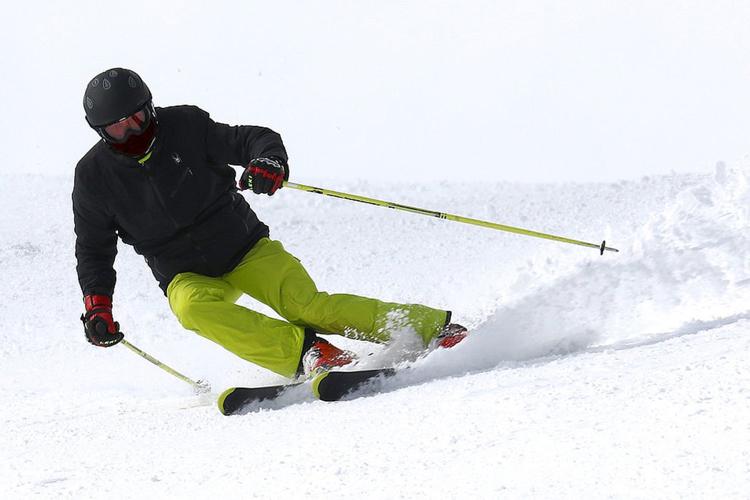Total knee replacement has become a very successful orthopedic surgery because of its high level of patient outcome and patient satisfaction.
While initially utilized to reduce pain and improve knee mobility, improvements in knee component technology have expanded those goals to return patients to an active lifestyle.
In Northern Michigan, one of those lifestyles is returning to the slopes for downhill skiing.
One of the most common questions I get when rehabilitating skiers who have undergone total knee replacement is “when can I start downhill skiing again?”
The answer to this question is a combination of biologic healing and return of functional ability.
Healing parameters for return to skiing
Overall, tissues need a minimum of about 3-6 months of healing to mend after surgery prior to being capable of handling the demands of downhill skiing.
Initially, 2-3 weeks of healing allows the wound to heal while the next 2-3 months enables the tissue to under a process of remodeling, where newly healed tissue reorganizes into normal tissue configuration.
Finally, tissue maturation (where the tissue reaches its maximum strength) occurs over the next 3-6 months.
Functional progression following total knee replacement
Functional return of strength, ROM, balance and ski readiness is a graduated, progressive process that follows tissue healing parameters.
The first 2-3 weeks focuses of edema management and restoration of ROM.
Functionally, progressing walking ability from a walker to a cane is the primary goal during this initial part of rehabilitation.
The next three weeks focuses on maximizing ROM return, gradually progressing to body weight strengthening, and functionally weaning off a cane and beginning walking up/down stairs.
From six weeks to three months post total knee replacement, treatment focuses on restoring full ROM, progressing strengthening to enable squatting tasks such as getting in/out of chair, walking without limping, walking up/down stairs reciprocally, and regaining balance to include single leg standing.
Finally, after three months from surgery, the primary focus for skiers is to continue to progress strength and balance exercises, incorporating plyometrics and ski-specific training. Return to skiing at this point varies by the patient with regards to pre-existing level of strength and conditioning prior to surgery, complications during recovery, and functional readiness for skiing.
Functional ability for return to skiing after TKA
Functional ROM to enable to getting on/off lift chair, getting up/down to the ground, and getting on ski boot.
Walking up/down stairs in ski boots, completing a minimum of 30 squats in one minute, and single leg balancing for 30-60 seconds.
Performing ski-specific drills that mimic the demands of downhill skiing.
All this being said, clearance from your surgeon to resume downhill skiing is a must as well.
Jeff Smith is a board certified orthopedic physical therapist and a CrossFit Level-1 instructor. Jeff practices physical therapy at Northern Michigan Sports Medicine Center in Petoskey and instructs crossfit classes at CrossFit Petoskey.







